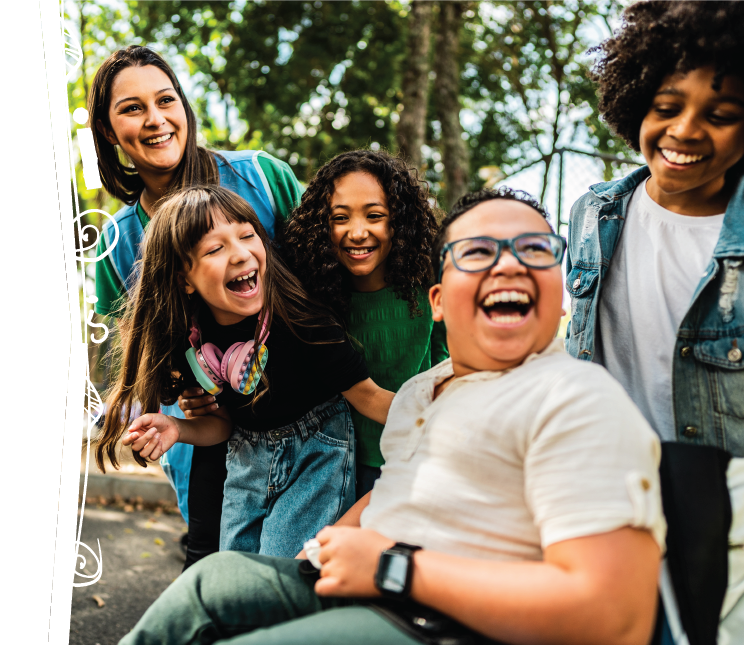Background
Many youth face multiple barriers and do not have access to supports, services and opportunities to thrive. Despite the large number of studies that address the question of how to promote positive youth development, there was no current overall summary of this research to form a basis for consistent evidence-based youth programs and services. To address the gap, the YMCA of Greater Toronto and United Way of Greater Toronto initiated a review of current research literature from 2002 to 2014: Youth Who Thrive.
Introduction
The Students Commission of Canada and the Social Program Evaluation Group at Queen’s University conducted the literature review to synthesize the best available current research on youth development. A full breakdown of the resources and literature review can be found at www.youthwhothrive.ca.
This module summarizes the full review, outlining the critical factors that support youth ages 12-25 to thrive during critical transitions in life. These can include factors such as moving to high school or leaving care and can promote long-term health outcomes throughout their lives.

As a result, this review includes:
- A review and synthesis of young people’s needs in relation to their development and critical transitions.
- Identification of key programming outcomes that address young people’s development and transitions.
- A discussion of evidence-based interventions and program designs to achieve outcomes.
RESOURCE:
Youth Who Thrive website.
What is autonomy?
Young people having input, voice or agency in determining their own choices and acting upon personal interests, values and goals.
Autonomy Outcomes
Learning (Cognitive / learning outcomes)
- When environments support autonomy, youth show improved school/activity performance and grades, greater motivation for learning and deeper thinking and reasoning.
- When youth feel they have more autonomy in the classroom, they are more likely to participate in school activities, reducing the drop-in student engagement that tends to occur with age.
- Support for autonomy from teachers and parents is critical for school achievement and competence, job exploration and career commitment.
Feeling (Psychological / emotional outcomes)
- Youth are more likely to establish life-goals and experience well-being if their parents/guardians behave in ways that support autonomy.
- Youth who feel hopeful and are more emotionally competent are more likely to have positive emotions and life satisfaction.
- Young people are more likely to have high levels of self-esteem and vitality (i.e., sense of energy) if they have opportunities to make decisions and commitments of their own volition or will.
Behaving (Behavioural / social outcomes)
- Higher volition or will is related with reduced misbehaviour and alcohol use from early to late adolescence.
- Increased autonomy can be beneficial for some young people but too much can be detrimental for others. For example, youth who have more autonomy and are living in situations that are risky or dangerous report higher delinquency.
- Youth are more likely to actively search for and accept social support if they receive autonomy support from their family.
- Programmers who know their youth well and know what the available research is saying, are able to use this combined knowledge to provide experiences of autonomy in positive safe environments. This allows youth to develop the skills to use autonomy more effectively in their riskier environments.
RESOURCE:
Critical Factors for Youth Thriving, (Chapter 4).
What Helps Youth Thrive?
What is relatedness?
Young people having a sense of belonging and connection with others.
Relatedness Outcomes
Learning (Cognitive / learning outcomes)
- Young people are more likely to be motivated to learn, do well in school and participate in school activities when they have supportive teacher-student relationships and experience belonging in school.
- Positive peer relatedness can support career exploration and commitment.
Feeling (Psychological / emotional outcomes)
- Youth are less likely to feel depressed if they have a sense of family connection and school belonging.
- Peer and teacher-related belongingness are associated with hope, improved psychological adjustment and well-being.
Behaving (Behavioural / social outcomes)
- Parent quality and adult bonds are associated with lower rates of delinquency.
- Teacher-student relationships are associated with lower rates of school misconduct and disciplinary problems.
- Learning positive social norms (such as appropriate ways to relate to others) from family and peers is linked to reduced antisocial behaviour. This relationship is so strong that it neutralizes any negative influences coming from neighbourhood or school contexts.
- Youth-adult mentorships with deep connections (i.e., long-term, close, frequent and involved) are effective at supporting social skill-building.
Resource: Critical Factors for Youth Thriving, (Chapter 5).
What is competence?
Young people having skills to effectively achieve desired goals.
Competence Outcomes
Learning (Cognitive / learning outcomes)
- When young people are hopeful about their competence, they are more likely to perform better in school.
- Self-perceived competence is associated with academic achievement and performance.
- Young people who are more socially competent are more likely to do well in school and continue to higher learning.
Feeling (Psychological / emotional outcomes)
- Youth with higher cognitive and behavioural competence are less distressed, have greater psychological well-being and report decreased substance use.
- Youth who feel hopeful and are more emotionally competent are more likely to have positive emotions and life satisfaction.
- Young people with higher social and physical competence have higher self-esteem.
- Emotional competence is associated with greater adaptability and coping, and reduced depressive thoughts, anxiety and mental disorders.
Behaving (Behavioural / social outcomes)
- Young people who have higher social competence tend to have lower rates of antisocial behaviour, delinquency and drug use.
- Higher cognitive and behavioural/social competence is associated with waiting to be sexually active and increased use of contraceptives.
- Physical competence is associated with sport participation.
- Youth who are more culturally competent tend to value diversity, have better physical health, delay gratification, and take leadership.
Online engagement practices that support the ARC model
To foster autonomy, relatedness and competence in a virtual landscape, create opportunities for youth to make meaningful choices and lead projects, which supports their sense of control and autonomy. Build a strong sense of community by encouraging collaboration and peer interactions, ensuring they feel connected and valued. Provide clear constructive feedback and resources to help them develop and showcase their skills, reinforcing their sense of achievement and growth. Balancing these elements helps create a supportive and empowering virtual environment.
Resource: Critical Factors for Youth Thriving, (Chapter 6).
Research Gaps
Although the research evidence is strong on the developmental needs of youth, there are questions that still need to be studied and answered. The most important to improve programming are:
- There is strong evidence that autonomy, relatedness and competence are critical factors of youth development that lead to positive outcomes. However, we do not know if these are the only critical factors.
- Evidence-based programs and practices may not be effective across all activities or for all youth. There is not enough research to conclude which programs or practices work best for specific youth in different contexts. It is important for these practices to be adapted with those youth in mind.
- Effective youth programs can lead to positive outcomes for youth and communities. However, it is less clear how these outcomes are related to health and well-being over the long-term.
- More research is needed on the long-term effects of virtual interactions on social and emotional development. Additionally, more exploration is needed on how emerging technologies impact mental health and learning outcomes and how to effectively integrate new methods of engagement into existing developmental frameworks.
Addressing these gaps can provide a deeper understanding of the evolving needs of youth.
Resource: Critical Factors for Youth Thriving, (PDF).
Two New Key Features of Positive Youth Development
The Youth Who Thrive Literature Review uncovered two new key features of positive youth development, adding to Eccles and Gootman’s original 8 features discussed in Module 4. These two new key features acknowledge that programs and initiatives need to take into account the uniqueness of individual youth.

Ensure diversity of experience
Programs that best support youth development include breadth and depth of programming. Breadth (variety of participation) is more significant in some cases than frequency. Participation in multiple programs protects youth from the shortcomings of any individual program, providing more opportunities to increase autonomy, relatedness and competence. Further, intentionally involving a diversity of perspectives and experiences within a program is a promising practice. When youth experience a new challenge or context that is different from their norm, they become more prepared for the transition to adulthood.
Customize youth programming
Youth programming should be as broad as possible (macro) while addressing the unique needs of its population (micro). This balance is achieved by coordinating and collaborating with all program partners, including youth. Programs can effectively meet the unique needs of specific youth by engaging them in program planning and decision-making. Youth input into program and organizational decision-making increases autonomy, relatedness and competence. Youth input is also a unique contributor to successful development and positive outcomes.